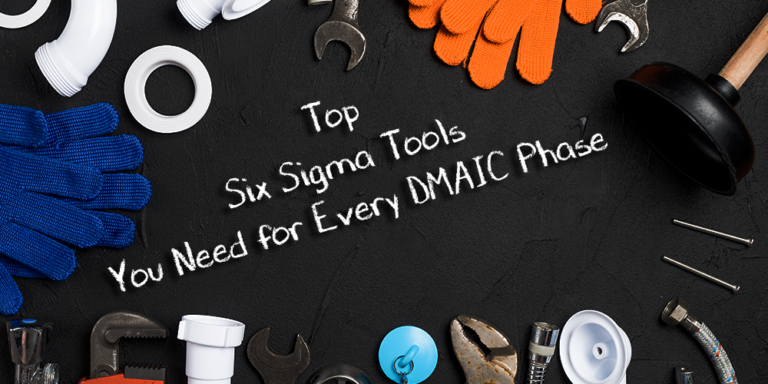Six Sigma has emerged as a pioneering practice followed today to improve customer satisfaction and business operations. Countries worldwide depend heavily on this method of business quality improvement to economize their processes, albeit the enormous dependence of this practice on statistical methods and data analysis may seem daunting to inexperienced, first-timers.
DMAIC is one the two methodologies under Six Sigma. It is followed when improvement of pre-existing business processes is required and can be divided into different phases. Each phase uses specific Six Sigma tools. They are:
What you'll find in this article
For Defining the problem
- Project Charter: It is a comprehensive document that furnishes information regarding the scope of the undertaken venture, the key decision makers, project lead and team members assigned. The charter also elucidates project goals, parameters and baselines, and expenditures incurred from dependencies, risks, timelines and poor quality.
- Process Map: The process map demonstrates a coherent understanding of the work flow and helps to discern wastage and rework, based on which improvements can be made. They are instrumental in recognizing and addressing problematic areas. Moreover, several other tools rely on these detailed and highly functional process maps.
For Measuring process components and performance
- Failure Modes and Effects Analysis (FMEA): FMEA identifies, assesses, and prioritizes those domains of a process requiring improvement. The analysis requires exhaustive mapping of areas having possibilities of errors arising and where there are risks of process breakdowns. Accordingly, mitigation plans and proactive management of failures should be undertaken.
- Cause and Effect Diagram: This tool identifies, manages and reveals the potential causes of a specific effect. Also known as the six sigma y=f(x) equation or Ishikawa diagram, it is possibly the quickest way to identify variables for further evaluation as root causes to an effect, in the form of a categorized graphical representation.
Six Sigma professionals do not always agree as to exactly which tools constitute the set.
For data Analysis
-
- Two-Sample T Test: It is the most extensively used statistical analysis tool to compare two levels of a continuous variable. It has been specifically designed for variables that are independent of one another.
- Pareto Chart: The Pareto chart is an informative bar chart based on the Pareto Principle, in which critical problems are recognized from trivial ones so that important issues are addressed first before delving into lesser problems. The Pareto analysis thus depicts a visual representation of factors such as sales and defects, among many others
- 5 Whys: Uses questions to arrive at the root cause of a problem.
- Mood’s Median: It is a non-parametric test. Data that are not normally distributed can be compared by determining if their medians are similar or not.
For process Improvement
- Design of Experiments: To solve problems where complex processes or systems have several factors influencing the outcome and where it is impossible to isolate one factor or variable from the others.
- Kaizen event: For prompt changes to use ideas of the people involved with the work.
- Simple Linear Regression: To quantify relationship between two variables, in the form of an equation, allowing to improvements to the processes.
For Control phase
This involves creating new standardized processes and controlling future process performances.
- IMR Control Chart: The Individual and Moving Range control chart (I-MR Chart) identifies stability or instability of the process. It is applicable to continuous data, and robust to non-normality.
- Control Plan: Identifies and illustrates process performance metrics to ensure customer requirements are satisfied. It allows the management to monitor improvements for stability over the long-term.
Cost Savings Calculations and Process Sigma Calculations are other typically used tools for process control.
While the above listed tools are some of the most widely used, there are other quality improvement tools available, depending on the nature of the project. Nevertheless, the ultimate purpose of all these Six Sigma tools and methodologies is to streamline business processes and thereby, enhance productivity.
A Six Sigma training and certification course can be availed by any individual coming from any industrial background, be it a project manager, quality analyst or even engineer. With the Six Sigma emerging as one of the most sought after practices, earning the Six Sigma designation is paramount for any professional seeking improvement in their organization’s processes.


